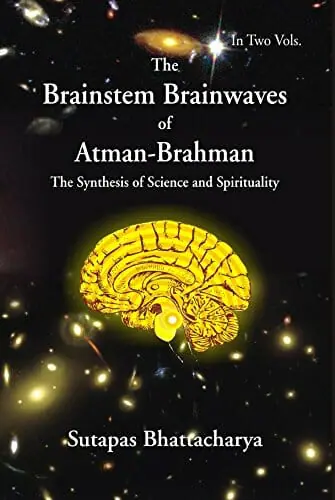In his 2007 BBC TV series The Story of India, British historian Michael Wood depicted the years that Buddha spent seeking enlightenment as merely getting away from the crowd, sitting under a tree, clearing his mind and thinking things through! This is as much a travesty as the claim that alchemists were trying transmute lead into gold. The Europeans refer to the 18th Century c.e. period of Rationalist re-examination of traditional thought as the “Enlightenment”. As I mentioned in Chapter 1, in episode one of his TV series Light Fantastic, Cambridge historian of science Simon Schaffer included Eurocentric and anti-mystical myths. He downplayed the shamanic mysticism of Empedocles (who claimed to be Divine and to be able to save souls from Hades) [1]. He even claimed erroneously that Greek culture dominated India after Alexander’s (brief) incursion into (the Persian-controlled part of) India. In fact, as discussed in Chapter 4, the Doctrine of the Four or Five Elements for which Empedocles became famous was a corrupt form of the Upanishadic panch bhuta ([2,3,4]. The Upanishadic version parallels 21st Century scientific understanding whereas Empedocle’s version is a ‘museum relic.’ Schaffer’s first episode concluded with Schaffer presenting Isaac Newton as just a ‘Natural Philosopher.’ No mention was made of the fact that Newton spent more time on mystical studies and thought that these were more important than his work in Natural Philosophy. According to Schaffer, Newton’s study of the diffraction of Light, using a prism, disproved the ancient myth of Divine Light and led to the true (Rationalist) Enlightenment in Europe. As with Professor al-Khalili’s dismissal of Alchemy, Schaffer dismissed the notion of Divine Light without understanding what he was referring to!

Western Rationalist Distortions and Constructivist Denials of True Enlightenment
The use of the term ‘The Enlightenment’ for the 18th Century Rationalist transformation of European high culture is rather apt in regard to mainstream European thought mistaking true (spiritual) enlightenment for a mere metaphor rather than a special mode of knowledge acquisition by Divine Illumination. Immanuel Kant famously denied this Third Mode of Knowledge beyond the limitations of Sensation and Conception [5]. In his The Shape of Ancient Thought, Thomas McEvilley states that most Western scholars have difficulty with the phrase “destroying the hypotheses”, in Plato’s Republic. Some amend the text to remove this key phrase whilst others reject Plato’s obvious meaning out of hand. The mind is drawn by negative dialectic, beyond the realms of mathematics and astronomy, which it destroys in passing. The ‘wisdom eye’ or ‘eye of the soul’ rises above the false knowledge of the sense world to the higher realm of mathematics and astronomy but these nonsensory ‘tools’ must in their turn also be cleansed. Progressive cleaning of the ‘wisdom’ eye requires annihilating these tools (these hypotheses) befouling the ‘wisdom eye’:
Now the wisdom eye sees, and the light of knowledge, which, like the sun shining on a shuttered window, has always been right there waiting, shines in.
Thomas McEvilley [6]

We saw that Merrell-Wolff acknowledged the traditional view that a well-developed intellect is a barrier to enlightenment. Obeyesekere notes that Reason itself is a barrier to nirvana or moksa [7].The use of the term supra-rational knowledge would be appropriate in regard to true enlightenment. But I have used a quotation from Plato whose Demiurge (the speculative ‘Creator God’) in the Timaeus is the embodiment of Reason itself [8]. Obeyesekere says that Plato apotheosized Reason. Reason is for Plato the objective faculty that permits one to understand the nature of the world [9]. Wolfgang Pauli wrote that Plato associated the (supposedly) eternal, unchanging Idea with the Rationality of Being [10]. Such Logocentrism (the view that human reason mirrors the real Order in Nature) permeates Western thought. Francis Bacon endeavoured to show that the ‘Laws of Nature’ are there in nature to be discovered by the knowing mind. The reason why our minds are capable of inductive learning and leaping is because there is an orderliness, partly visible and partly invisible, pervading nature. The Divine Mind informed nature [11]. Plotinus went beyond Plato’s fixation on (human generic) Ideas with his (supposedly) ineffable One beyond the Ideas or Forms in Nous. Plato’s supposedly Eternal Ideas such as Good and Beauty are actually human constructs, value judgements, projected onto the Light. Echoing Pythagoras, Plato saw Ideas as patterns of Numbers [12]. For Plotinus there is no discursive thought in Nous, no passing from one point to another [13]. In Nous everything is something primarily and everything else subsidiarily [14]. This is not Reason related to Ratio and supposedly perfect rational numbers, it is holonomic prajna, the luminous Wisdom-Consciousness which transcends dichotomous human reason.

As with nearly all great philosophical mystics from all cultures, Plato asserts that the Light of Wisdom is in fact present in everyone but clouded over by concepts and sense perceptions (i.e. mental activity), a point stressed by Forman et al. in The Innate Capacity: Mysticism, Psychology and Philosophy [15]. Thus, contrary to the pseudo-scientific myths of Richard Bucke, Aurobindo Ghose and Gopi Krishna and repeated by Sarvepalli Radhakrishnan and many New Agers such as Ken Wilber and Ervin Laszlo, there is no Evolution of Consciousness in the New Age sense (See Chapter 6). The enlightened mystic is not more evolved biologically, nor a progenitor of a new variety of ‘Gnostic Being’ or Superman as imagined by Western-educated Aurobindo Ghose in his The Life Divine. In fact, in The Life Divine, Aurobindo himself restates the Innate Capacity argument early on referring to enlightenment as uncovering our Innermost Self (the Light or Atman). But in the second half, he proceeds to speculate inconsistently, on unsubstantiated grounds, for hundreds of pages about the rise of the new Gnostic ‘Supermen.’ He makes it clear that this is just speculation (it cannot of course be grounded in experience) but many followers take this speculation to be fact [16]. Rather than such so-called ‘Evolution,’ based on misunderstandings of biological evolution both as being teleological and as occurring within an individual’s lifetime (See Chapter 6), enlightenment involves ‘stopping the mind’ to attain a state resembling a Near-Death state (hence the lack of heartbeats etc. in Ramakrishna). This “Innate Capacity” argument again fits perfectly my Reticular Activating System (RAS) brainwave correlate of the Divine Light as the RAS brainwaves from the brainstem reticular formation constitute the background matrix of gross brainwave activity, covered over by brainwaves from the rest of the brain correlated with various sorts of mental activity. ‘Stopping the Mind’ thus uncovers this background field (the Yogic tanmatra; that matrix) underlying the mind.
Hanegraaff says that such views of Evolution towards Universal Gnosis began with the Romantics fusing the Platonic idea of circular return to the Good with the idea of linear progress. Both A.O. Lovejoy and M.H. Abrams wrote that Romantics transformed Plotinus’ Emanation into an Evolution. Whereas Plotinus saw this material world as devoid of Good, the Romantics transferred ultimate value to this world. The process of self-education was seen as leading to a progressive ‘Evolution of Consciousness’ culminating in a Universal Gnosis when Humanity will repossess everything which in earlier stages of partial knowledge it had been alienated from [17]. This repossession of everything from which Humanity has been alienated is in fact a false projection onto human history of Plato’s doctrine of Recollection. The individual philosopher-mystic in enlightenment ‘unforgets’ the omniscient knowledge of all things in the universe (i.e. attains gnosis) which is latent within us but which we forget when the soul is reincarnated into Matter. Similarly, says Hanegraaff, the Theosophy and New Age movements have turned Reincarnation into a positive process of Spiritual Evolution. In Hinduism and Buddhism, Reincarnation was negative and Enlightenment freed one from the ‘Wheel of Rebirth.’ Such Romantic Evolutionism has led to New Age conceptions of world history culminating in the ‘Age of Aquarius’ [18].
NOTE:
This is Part I of Chapter 3 of “THE BRAINSTEM BRAINWAVES OF ATMAN-BRAHMAN. The Synthesis of Science and Spirituality” (In Two Volumes) (Volume 1), written by Sutapas Bhattacharya.
Title of Original Chapter: “The True ‘Light of Truth’: The Link between Spiritual and Material Realms”

References
1. Kingsley, Peter (1995) Ancient Philosophy, Mystery, and Magic: Empedocles and Pythagorean Tradition, Clarendon Press (Oxford University Press).
2. Whiteman, J.H. Michael (1967) Philosophy of Space and Time and the Inner Constitution of Nature: A Phenomenological Study, Muirhead Library of Philosophy, George Allen & Unwin and the Humanities Press.
3. McEvilley, Thomas (2002) The Shape of Ancient Thought: Comparative Studies in Greek and Indian Philosophies, Allworth Press.
4. Goonatilake, Susantha (1998) Toward a Global Science: Mining Civilizational Knowledge, Indiana University Press.
5. Leonard, Ron (1999) The Transcendental Philosophy of Franklin Merrell-Wolff, State University of New York Press.
6. McEvilley, Thomas (2002) ibid.
7. Obeyesekere, Gananath (2002) Imagining Karma: Ethical Transformation in Amerindian, Buddhist and Greek Rebirth, University of California Press.
8. Obeyesekere, Gananath (2002) ibid.
9. Obeyesekere, Gananath (2002) ibid.
10. Lindorff, David (2004) Jung and Pauli: The Meeting of Two Great Minds, Quest Books.
11. Chattopadhyaya, D.P. “Plato, Neoplatonism, and Their Parallel Indian Ideas”. In Paulos Mar Gregorios (Editor) (2002) Neoplatonism and Indian Philosophy, State University of New York Press.
12. Chattopadhyaya, D.P. (2002) ibid.
13. Obeyesekere, Gananath (2002) ibid.
14. Chattopadhyaya, D.P. (2002) ibid.
15. Forman, Robert K.C. (1998) (Editor) The Innate Capacity: Mysticism, Psychology and Philosophy, Oxford University Press.
16. Ghose, Aurobindo (Sri Aurobindo) (1939) The Life Divine, Sri Aurobindo Ashram Publications.
17. Hanegraaff, Wouter “Romanticism and the Esoteric Connection. In Roelof van den Broek and Wouter J. Hanegraaf (Editors) (1998) Gnosis and Hermeticism: From Antiquity to Modern Times, State University of New York Press.
18. Hanegraaf, Wouter “The New Age Movement and the Esoteric Tradition”. In Roelof van den Broek and Wouter J. Hanegraaf (Editors) (1998) Gnosis and Hermeticism: From Antiquity to Modern Times, State University of New York Press.
External Resources
The Impact of Enlightenment in Europe
The Enlightenment
Anecdotes of Enlightenment
